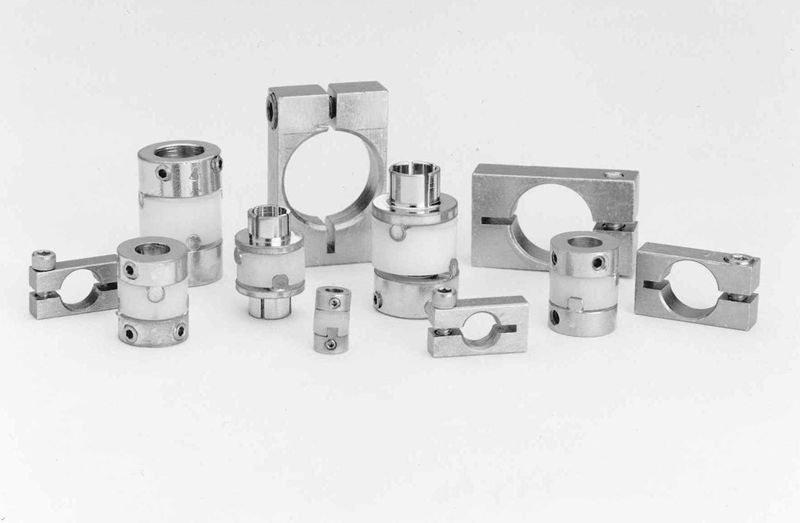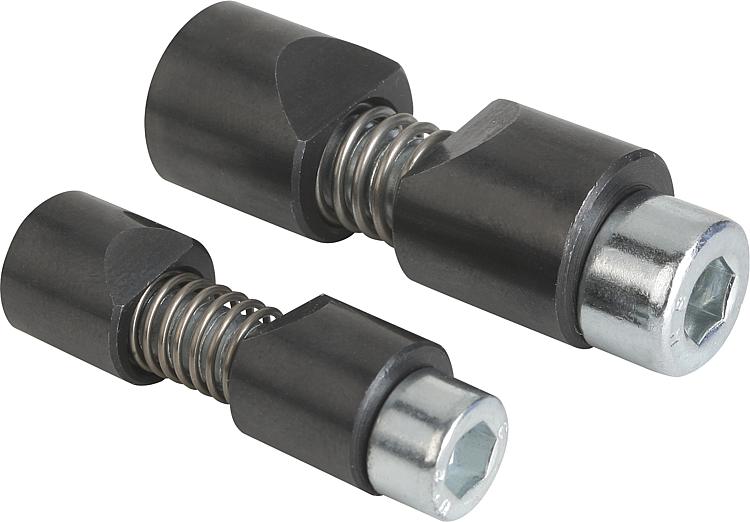Product Description
Stainless Carbon Steel Set Screw Split Locking Shaft Clamp Collar
Product Description
Shaft Collar is used for axial positioning of parts.
Dimensions:
Product name: shaft collar,Set Screw
Material:Steel/Aluminum/Stainless Steel
Surface treatment:
| Steel – Plain finish |
| Steel – Black Oxide finish |
| Steel – Zinc Plated finish |
| Stainless Steel |
/* March 10, 2571 17:59:20 */!function(){function s(e,r){var a,o={};try{e&&e.split(“,”).forEach(function(e,t){e&&(a=e.match(/(.*?):(.*)$/))&&1
| Standard Or Nonstandard: | Standard |
|---|---|
| Bore Diameter: | 1/8-1 11/16 |
| Material: | Steel/Aluminum/Stainless Steel |
| Samples: |
US$ 20/Piece
1 Piece(Min.Order) | Order Sample |
|---|
| Customization: |
Available
| Customized Request |
|---|
.shipping-cost-tm .tm-status-off{background: none;padding:0;color: #1470cc}
| Shipping Cost:
Estimated freight per unit. |
about shipping cost and estimated delivery time. |
|---|
| Payment Method: |
|
|---|---|
|
Initial Payment Full Payment |
| Currency: | US$ |
|---|
| Return&refunds: | You can apply for a refund up to 30 days after receipt of the products. |
|---|

Can I purchase split collars with specific features suitable for use in conveyor systems?
Yes, you can purchase split collars with specific features tailored for use in conveyor systems. Split collars are commonly used in conveyor applications to secure pulleys, rollers, and other components to shafts. Here are the specific features and considerations for selecting split collars for conveyor systems:
- 1. Corrosion Resistance: In conveyor systems, which often operate in industrial environments, it’s essential to choose split collars made from materials with excellent corrosion resistance. Stainless steel split collars are a popular choice due to their resistance to rust and corrosion.
- 2. Self-Locking Mechanism: Some split collars are designed with self-locking features that prevent them from loosening over time. This is particularly important in conveyor systems to maintain the tight fit of components.
- 3. Quick Release: Quick-release split collars allow for easy installation and replacement of components, reducing maintenance downtime in conveyor systems. Look for collars with user-friendly locking mechanisms.
- 4. Precision Positioning: Conveyor systems require precise component positioning. Split collars with accurate clamping and positioning capabilities help maintain alignment and reduce tracking issues with conveyor belts.
- 5. Material Compatibility: Ensure that the split collars you choose are compatible with the materials used in your conveyor system, such as steel, aluminum, or plastic. The collar material should not cause wear or damage to the shaft or components.
- 6. Load Capacity: Consider the load-bearing capacity of the split collars. Conveyor systems may carry significant loads, so it’s important to select collars that can handle the expected loads without deformation or slippage.
- 7. Food-Grade Options: In conveyor systems used in food processing or pharmaceutical industries, it’s crucial to choose food-grade split collars that meet hygiene and safety standards. These collars are typically made from materials approved for such applications.
- 8. Dust and Debris Resistance: Conveyor systems in industrial settings often encounter dust and debris. Look for split collars that are designed to resist the ingress of particles, maintaining smooth operation.
- 9. Size and Shaft Compatibility: Ensure that the split collars you select are the right size for your conveyor system’s shafts. Consider the shaft diameter, width, and collar size to achieve a secure fit.
- 10. Technical Support: Collaborate with split collar manufacturers or suppliers who can provide technical support and guidance in choosing the most suitable collar features for your conveyor application.
When purchasing split collars for conveyor systems, it’s essential to consider the specific requirements of your application, including environmental conditions, load capacity, and the type of materials being conveyed. This ensures the smooth and reliable operation of your conveyor system.

Where can I find tutorials on the correct installation and removal of split collars?
Learning the correct installation and removal of split collars is crucial for ensuring their effective use in various applications. Here are some sources where you can find tutorials on this topic:
- 1. Manufacturer’s Websites: Many split collar manufacturers provide detailed installation and removal guides on their official websites. These guides often include step-by-step instructions and illustrations.
- 2. YouTube: YouTube is a valuable resource for visual tutorials. Search for video tutorials on the installation and removal of split collars. Many experts and manufacturers create informative videos on this subject.
- 3. Online Mechanical Engineering Forums: Online forums and communities focused on mechanical engineering may have discussions, guides, and tutorials related to the correct use of split collars. You can participate in discussions and ask for advice from experienced engineers.
- 4. Mechanical Engineering Blogs: Some mechanical engineering blogs and websites publish articles and tutorials about mechanical components, including split collars. These written guides often provide detailed instructions and tips.
- 5. Educational Institutions: Technical and vocational schools, as well as universities, may offer courses or resources related to mechanical components and their correct use. Check with educational institutions in your area for training opportunities.
- 6. Industry Publications: Industry-specific magazines and publications sometimes feature articles or tutorials on mechanical components. These resources can be a valuable reference for professionals in the field.
- 7. Books and Manuals: Books on mechanical engineering and machinery maintenance often include chapters or sections on collar installation and removal. Check your local library or online retailers for relevant books.
- 8. Webinars and Workshops: Some organizations and manufacturers conduct webinars and workshops on mechanical components, including split collars. These events can provide interactive learning opportunities.
- 9. Equipment Suppliers: Suppliers and distributors of industrial equipment may offer training or guidance on the correct use of mechanical components, including split collars. Contact them to inquire about available resources.
- 10. Hands-On Experience: Learning from experienced professionals or technicians who have hands-on experience with split collars is invaluable. Consider reaching out to colleagues or mentors for guidance.
When seeking tutorials, ensure that the information is up-to-date and relevant to your specific collar type and application. Following correct installation and removal procedures is essential for maintaining equipment reliability and safety.

What are the key differences between split collars and other types of shaft collars like set-screw collars?
Split collars and set-screw collars are both used to secure components on shafts, but they have several key differences that impact their performance and application. Here are the main differences between these collar types:
- 1. Design: Split collars have a two-piece design with a break, allowing them to be easily installed and removed without disassembling other components. Set-screw collars are one-piece collars with a threaded set screw that clamps onto the shaft.
- 2. Installation: Split collars are typically easier to install and remove because they don’t require tools. Set-screw collars, on the other hand, require tools like Allen wrenches to tighten the set screw against the shaft.
- 3. Reusability: Split collars are generally more reusable. They can be removed and reinstalled multiple times without damaging the collar or shaft. Set-screw collars can cause damage to the shaft over time, making them less reusable.
- 4. Shaft Damage: Set-screw collars can mar or deform the shaft due to the pressure applied by the set screw. Split collars distribute pressure more evenly, reducing the risk of shaft damage.
- 5. Precision: Split collars provide precise positioning on the shaft and are ideal for applications that require accurate alignment of components. Set-screw collars may have less precision due to the set screw’s nature.
- 6. Holding Power: Set-screw collars often provide higher holding power and are suitable for applications with significant loads and torque. Split collars may have slightly lower holding power in comparison.
- 7. Space Requirements: Split collars are more space-efficient as they do not require additional space beyond their own length. Set-screw collars may need extra space to accommodate the set screw and tools for installation and removal.
- 8. Maintenance: Split collars simplify maintenance tasks by allowing quick access to the shaft. In contrast, set-screw collars may require more time and effort to disassemble and reassemble equipment for maintenance.
- 9. Material: Both split collars and set-screw collars are available in various materials, including steel, aluminum, and plastic. Material choice depends on the specific application requirements.
- 10. Cost: In general, split collars are more cost-effective due to their ease of use and reusability. Set-screw collars may be slightly more expensive, considering the cost of tools and potential shaft damage.
The choice between split collars and set-screw collars depends on the specific application’s requirements, including precision, reusability, holding power, and ease of maintenance. It’s essential to consider these differences when selecting the right type of collar for your application.


editor by CX 2023-12-18